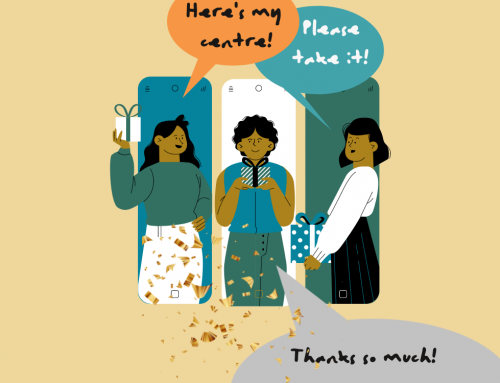 This article is taken from the Harvrd Business Review. Find the full article on: http://blogs.hbr.org/cs/2013/01/its_not_all_about_growth_for_s.html.
This article is taken from the Harvrd Business Review. Find the full article on: http://blogs.hbr.org/cs/2013/01/its_not_all_about_growth_for_s.html.
If you ask venture capitalists in Silicon Valley how they measure the success of business entrepreneurs, they would no doubt list off metrics having to do with fast growth: funding raised, people hired, customers acquired, revenue produced. The assumption is that company growth is good. But when it comes to social ventures, where the primary focus is impact (not profits), bigger isn’t necessarily better.
When organizations talk to my colleagues and me at the Skoll Foundation about growth in staff size, budget size, or client / beneficiary numbers, we often ask “So what?” In our view, those types of growth don’t necessarily translate to real and significant impact. Sure, size can often be correlated to maturity, but we want to know that the service, curriculum, or product the organization is offering has a significant impact on the problem it aims to solve. For us the question is not how do you grow organizations but how do you scale impact?
It All Begins with Evidence
To understand what to scale, you have to know what’s working. Let’s take the example of mother-to-child transmission of HIV. According to UNAIDS, about 330,000 new infants are infected with HIV every year, even though it’s scientifically possible to prevent mother-to-child transmission. Thirty-five percent of these infections occur in South Africa and Nigeria alone. To address this, Cape Town-based NGO mothers2mothers employs and trains HIV-positive mothers as “Mentor Mothers” who work alongside nurses and doctors in clinics, providing psychosocial support to pregnant women and new mothers living with HIV. The organization’s ultimate aim is to eliminate mother-to-child transmission of HIV.
One way to tell the story of mothers2mothers’ growth is as follows: since 2001, the organization has expanded its operations to nine countries with an approximately $20 million operating budget. It runs more than 600 sites that employ about 1500 Mentor Mothers who work with almost 250,000 HIV-positive clients. These numbers are impressive and could easily entice a funder to support m2m. But, so what?
The first question should be: does the presence of a paid Mentor Mother in a clinical setting prevent mother-to-child transmission? If the answer is no (or we’re not sure), then the organization’s impressive size is a moot point. In this case, a rigorous evaluation completed in 2011 combined with previous studies proved that when a Mentor Mother is present, HIV-positive women increase their uptake of antiretrovirals, and are more likely to disclose their status, deliver their baby in a clinic, and ensure their children receive prophylaxis after delivery; all factors that lead to prevention of mother-to-child-transmission of HIV. In fact, where Mentor Mothers are present, transmission rates are on average 9%, compared to the UNAIDS 2010 estimate of 27%. Conclusion? This innovation has impact.
So what should mothers2mothers’ leaders do? Should they continue to grow their successful organization, expanding the program to more sites and more countries? Maybe. But a real answer requires shifting the conversation from how to grow the organization to how best to increase its impact.
Multiply Impact, Don’t Just Grow the Organization
When an organization has evidence that its innovation and model produce substantial social impact, its leaders face a dilemma: do we grow our organization continuing to provide our service directly or do we expand our impact by helping other organizations adopt the model? An organization that can scale without directly doing the work or incurring the costs will ultimately have far bigger impact than one trying to do it by growing big.
Many in the nonprofit world call this technical assistance or training, while for-profit entrepreneurs might see it as business development, partnerships or even affiliate marketing. I’m not sure either frame is right. “Cultivating the ecosystem” might be a better term, by which I mean:
1.Identifying gaps preventing a successful innovation from reaching scale;
2.Gathering and publicizing evidence that matters to key decision-makers from all sectors and could help fill these gaps; and
3.Helping decision-makers and their organizations co-implement the proven innovations.
Some organizations have already adopted this approach. For example, mothers2mothers now directly operates some sites as centers of excellence while also assisting ministries of health in launching, implementing and monitoring their own national mentor mother programs. Root Capital, a nonprofit that makes loans to small agricultural producers is not simply lending directly to rural businesses, it is also actively working to build a model of measurable, replicable agricultural lending that other financial institutions can adopt. The organization recognizes that its impact could be greater than the size of its loan portfolio or its direct footprint; it could build a new lending market.
The Drawbacks: A Complex Incentive Structure and the Quality Question
Of course there are limits to this ecosystem-building approach: primarily, getting funders on board and maintaining quality. Funders have traditionally been interested in how their money is attributable to a specific impact (e.g., my money built X number of schools). But here funders would need to accept shared contribution rather than direct attribution (e.g., my money helped prove that there is a more cost-effective way to deliver quality education and a government was able to implement that model in many more areas). Additionally, cultivating the ecosystem requires different skill sets, namely business and product development, marketing, evaluation, advocacy, and training. Often, funders hesitate to invest in these types of functions because they appear to be less directly connected to impact. Yet, if scaling impact is the goal, these skills are essential. Second, assuring continued quality while scaling an innovation through other entities can be difficult. The organization must build a model that is intuitive, easy to recreate in other environments, and easy to measure using a standard approach; otherwise the original impact will be hard to reproduce.
Successful examples of this approach are still rare; most people point to microfinance. Yet, there are early indicators that progress toward this approach is being made. Over the last few years we have seen innovations such as mercury-free hospitals written into national and international frameworks; the growth of nascent markets such as sustainable seafood; formerly entrenched systems incorporating new models such as women’s land rights; and massive behavior shifts such as abandonment of female genital cutting.
To continue this success, we need two things. One, we need funders who are willing to invest in core functions and place the success of the ecosystem above that of the organization. And, two, we need entrepreneurs who can prove that their goal is much more than size by transferring control to local ownership, partnering with would-be competitors, and measuring broader adoption of the model, not just their implementation of it. More players should be asking “So what?” to prove the goal is much more than size: it’s about impact.







